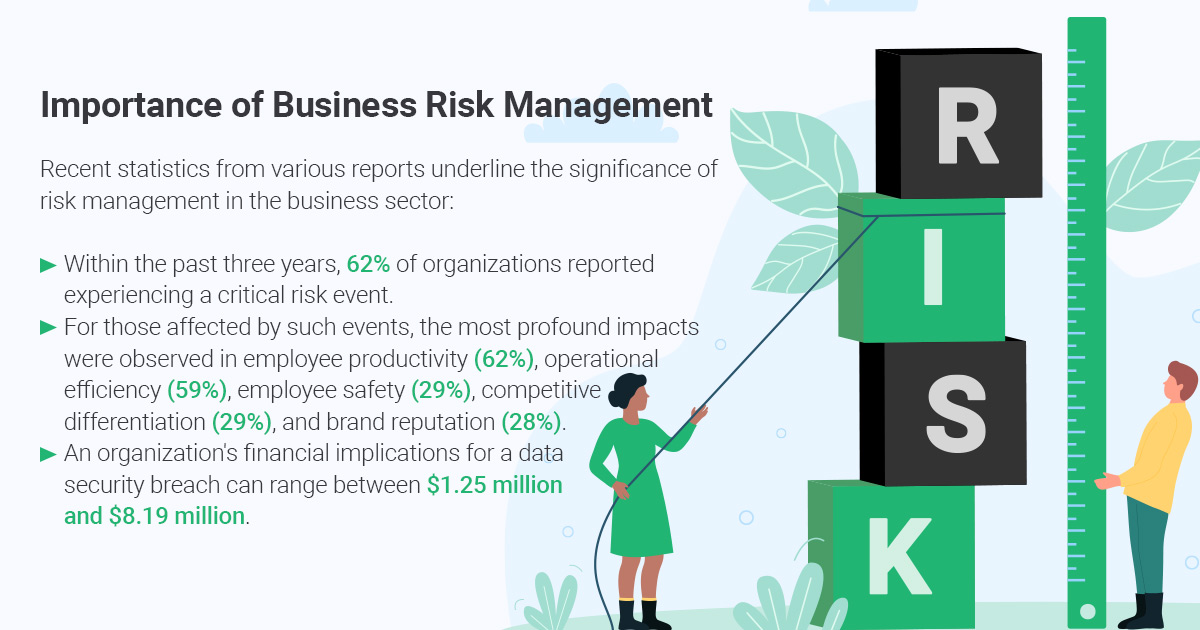The Critical Value of Risk Management in Getting Business Goals
This is where Risk Management steps in, providing an organized approach to recognizing, assessing, and mitigating possible roadblocks to progress. As we explore the vital role of Risk Management in achieving business objectives, one can not ask yourself but aid: how does this translate right into real-world success?
Recognizing the Idea of Risk Management in Company

The Important Function of Risk Management in Strategic Planning
Integrating Risk Management into calculated planning acts as a secure for organizations, anchoring their long-term plans with a strong foundation of preparedness and durability. Risk Management offers a framework for expecting uncertainties and developing ideal responses, making sure the organization's survival and prosperity even in the face of misfortune. By incorporating Risk Management into strategic planning, companies can change these unpredictabilities into chances for growth and innovation.

Strategies for Identifying, Assessing, and Prioritizing Threats
The procedure starts with Risk recognition, using devices such as SWOT evaluation, which helps in identifying possible risks and possibilities. Next, Risk analysis is carried out to ascertain the prospective impact and chance of each Risk. Threats are prioritized why not try this out based on their potential effect and likelihood, allowing organizations to concentrate their resources on critical dangers.
Securing Organizational Operations Via Efficient Risk Management
In the company landscape filled with uncertainties, effective Risk Management plays a crucial role in protecting organizational operations. By identifying and evaluating possible risks, Risk Management allows organizations to establish durable backup plans. Companies need to invest in comprehensive Risk Management techniques to safeguard their procedures.

Converting Potential Risks to Opportunities: The Power of Risk Management
An aggressive technique to take the chance of Management entails identifying, analyzing, and focusing on threats to design techniques that turn them right into prospective advantages. Hence, by leveraging the power of Risk Management, organizations can not only protect their operations but likewise stimulate growth and attain their goals in an unforeseeable organization atmosphere.
Instance Studies: Success Stories of Risk Management Driving Service Objectives
Successful implementation of Risk Management strategies has yielded outstanding outcomes in different businesses, underscoring the values of this technique. International business like Microsoft and Google, for instance, have actually next leveraged Risk Management to reduce threats and manipulate chances, driving their service goals onward. These instances highlight exactly how successful Risk Management can not just steer businesses clear of possible mistakes yet additionally guide them in the direction of their tactical goals.
Final thought
In final thought, Risk Management is essentially crucial in attaining organizational objectives. By incorporating Risk Management into tactical planning, organizations can much better navigate unpredictabilities, guard procedures, and capitalise on possibilities, thus straightening with lasting goals.
At its core, Risk Management is the process of recognizing, analyzing, and resolving prospective threats that could negatively impact an organization's operations or purposes. Next, Risk analysis is conducted to determine the potential impact and possibility of each Risk. Threats are focused on based on their possible impact and possibility, permitting organizations to concentrate their sources on critical threats. By identifying and evaluating potential dangers, Risk Management allows organizations to develop robust YOURURL.com backup plans. An aggressive technique to run the risk of Management includes identifying, assessing, and focusing on threats to create methods that turn them into possible advantages.